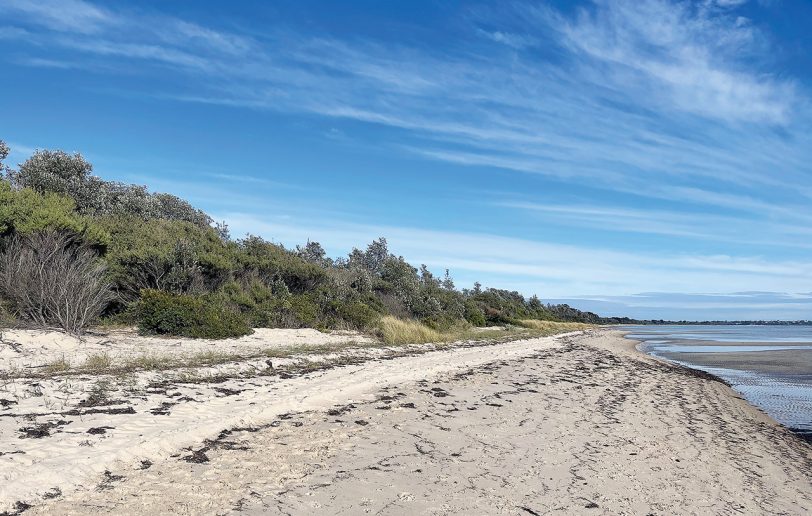IT may be a narrow section of remnant bushland with many open spaces squeezed between a busy highway and the sea, but the Capel Sound foreshore reserve is home to a wide variety of birds, reptiles and animals.
Among the 83 species identified in a year long study of the foreshore reserves, are four introduced animals and four introduced birds.
The fauna survey conducted for Capel Sound Foreshores management committee by Mal’s Ecological and Environmental Services has found the four kilometres of reserves are worthy of being recognised as having state and regional significance.
The survey listed three species of fish, four amphibians, nine reptiles (one tortoise, seven lizards and one snake), 53 birds (including four introduced species) and 14 mammals (including four introduced).
The management committee wants the community to “know what’s on their doorstep, how unique our environment is, and why it’s worth protecting”, foreshore manager Travis Graham said.
He said the fauna survey shows the Capel Sound foreshore reserves should be recognised as having state or regional significance due to:
- The high biodiversity site rating of the environmental reserve;
- The presence of threatened state and regional listed flora and fauna species;
- The presence of ecological vegetation classes (EVCs) classified as endangered, threatened or depleted within the Gippsland Plain bioregion; and
- The environmental reserve being an important part of the Port Phillip biolink and Tootgarook Wetlands via the Chinaman’s Creek biolink.
Graham said one of the four identified EVCs was listed as “endangered” (coastal dune grassland), as “vulnerable” (coast Banksia woodland) and another as “depleted” (coastal alkaline scrub).
“An improved integrated weed management approach is required to prevent further infestation of environmental weeds which are altering habitat values and stifling natural regeneration of the environmental reserve,” he said.
It was also necessary to continue controlling foxes, cats, turtledoves, mynas, starlings and rodents as well as installing more “species specific” breeding boxes.
Nesting areas along the foreshore could be cordoned off during specified times, human disturbance minimised and fallen debris from trees utilised.
Graham said non-indigenous canopy trees should be removed and room provided to store chemicals and equipment to control weeds.
The report should be followed by an ongoing environmental monitoring program to record changes in “species diversity and abundance in response to variable seasonal conditions, particularly for endangered and threatened species”.
Signs could also provide general educational “with a view to increase local engagement and awareness of relevant considerations for the management of the environmental reserve as well as public use of the land”.




